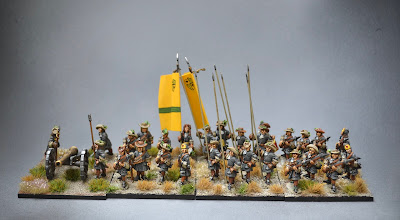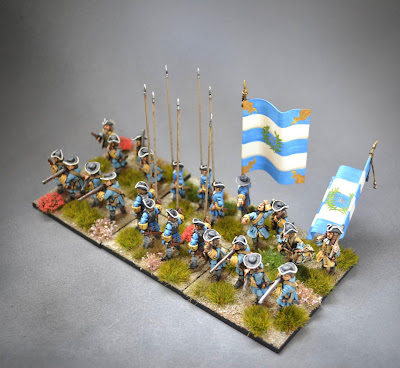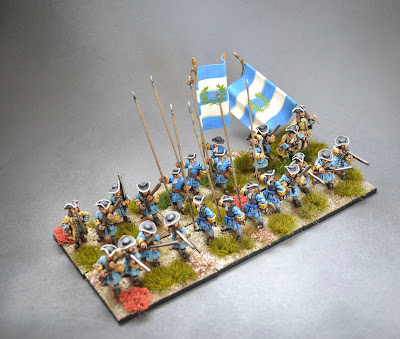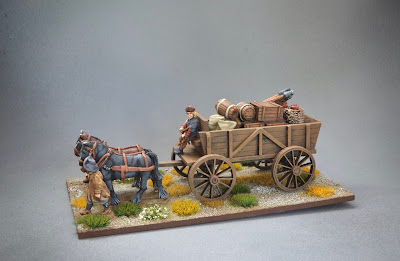One of my favourite blog posts of the past few years, since I went back to the seventeenth century as a wargaming period, was something I wrote about hiring German mercenary foot, recruited by the civic elders and burghers of the (fictitious) Flemish city of Laarden to brace and supplement Laarden's otherwise creaking military capacity.
As I wrote that post, I loved thinking through the various restrictions which might be applied to a contract for the supply of mercenary troops. Since then, I've tried to read more concerning what the term "mercenary" soldiers meant in early modern Europe - whether they were "meer Mercenaries, and Hirelings", or whether this term was really just another name for veterans. Men who knew which end of a matchlock musket the powder and ball got rammed into, maybe. Over the years since that post, I've painted the figures I blogged about, and added some more - in the shape of a battalion of Southern German foot. I thought it was about time I added them to the Blog from my photo-backlog.
First up is the North German foot battalion of Graf Joachim von Bek. Rather than pick an Imperial battalion from the (very) long list of Imperial regiments from the 1680s, I wanted von Bek's foot to be taken from a painting of the period. There was an Imperial regiment of Bek, but what I had in mind was more alt-historical - a battalion which, having served in the Dutch Wars could then have experienced warfare in the Baltic. Pieter Wouvermans' painting of the December 1672 assault on Coevorden has an amazing variety of both foot and horse in the foreground. I really liked the look of the foot on the right of Wouvermans' painting, with the yellow damask silken standard.
I tried to capture some of the grey, ochre, buff and brown figures in the painting in the uniforms for Graf von Bek's Foot. Being mindful of just how many light grey uniforms I've had to paint with Louis XIV's French foot, I was keen to try and find (or justify) German foot with some more varied uniforms. I thought dark grey uniforms would set off the ochre- and buff-coloured stockings and cuffs, while staying true to the soldiery in Wouvermans' fine painting. Also, as I mentioned in the earlier Blog post, I added brass frets of oak-leaves to make the Imperial, or Imperial-subsidised, foot to make them more distinctive on the tabletop battlefield.

































